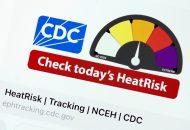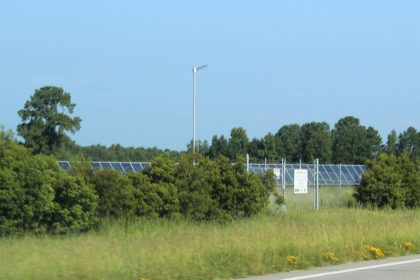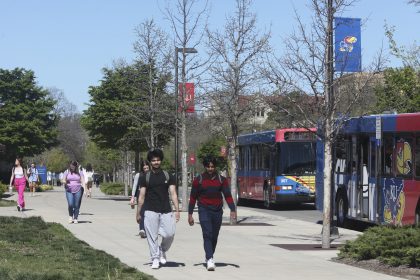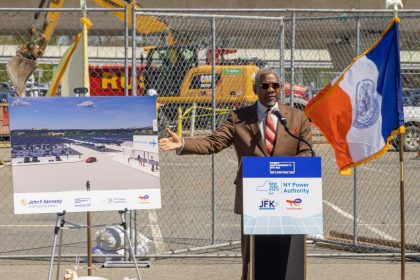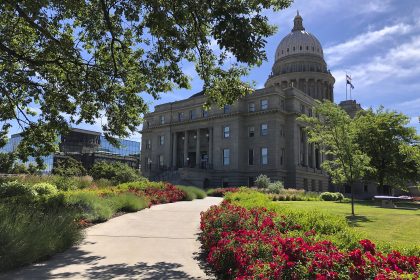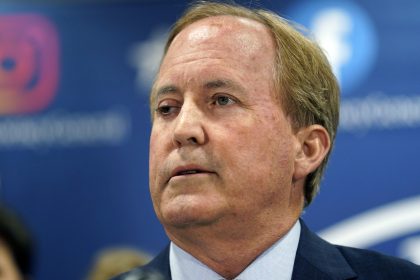Youngkin Releases ‘All-of-the-Above’ State Energy Plan for Virginia
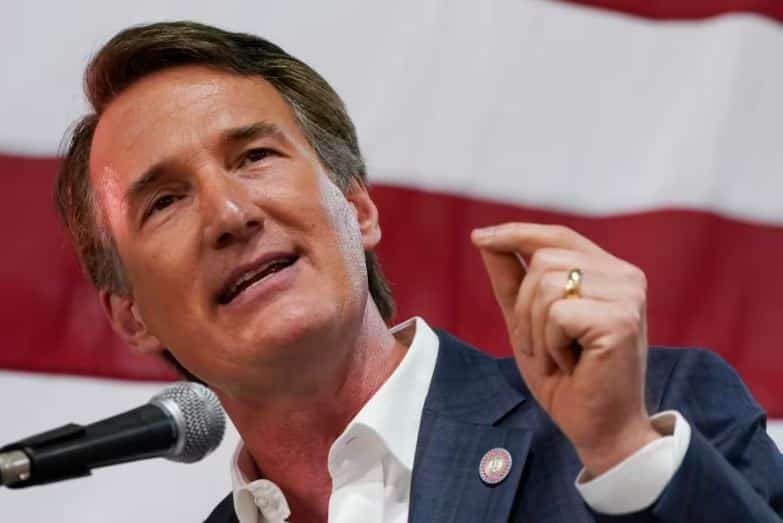
LYNCHBURG, Va. — Virginia Gov. Glenn Youngkin unveiled his “2022 Energy Plan” for the state on Monday, adopting an “all-of-the-above” approach that includes natural gas, renewable energy, hydrogen and, most notably, nuclear power to meet the state’s current and future energy needs.
He went on to say on Monday that at a future date he will disclose how he intends to turn Virginia into the world’s leading nuclear innovation hub.
“A growing Virginia must have reliable, affordable and clean energy for Virginia’s families and businesses. We need to shift to realistic and dynamic plans,” the Republican governor said.
“The 2022 Energy Plan will meet the power demands of a growing economy and ensures Virginia has that reliable, affordable, clean and growing supply of power by embracing an all-of-the-above energy plan that includes natural gas, nuclear, renewables and the exploration of emerging sources to satisfy the growing needs of commonwealth residents and businesses,” he added.
According to the governor, Virginia’s energy landscape is at a crossroads, with the energy needs of its businesses and families changing and growing.
From 2010 to 2020, he said, Virginia’s energy consumption grew 2.0% from 123.8 terawatt hours to 126.3 TWh.
“The plan adopted in recent years by the previous administration goes too far in establishing rigid and inflexible rules for the transition in energy generation in Virginia,” the plan says.
“We need to recognize that a clean energy future does not have to come at the cost of a healthy, resilient, and growing economy. We first must embrace a measure of humility as to our ability to project and predict 30 years of energy demand and technological innovation. And we certainly should not make irreversible decisions today to exit critical elements of power stack,” it continues.
“Additionally, we must reject the mindset that it is ‘either/or,’ and embrace the reality that it is ‘both/and,’” the plan says. “In fact, the only way to confidently move towards a reliable, affordable and clean energy future in Virginia is to go all-in on innovation in nuclear, carbon capture, and new technology like hydrogen generation, along with building on our leadership in offshore wind and solar.”
The 35-page plan itself recommends Virginia make strategic investments in innovative, emerging technologies, including hydrogen, carbon capture, storage and utilization, and, particularly, small modular nuclear reactors.
The plan supports funding to initiate the goal of deploying a commercial small modular nuclear reactor in Southwest Virginia within 10 years.
Youngkin’s proposal also supports adding offshore wind generation to the state’s energy mix, leveraging its position as host state to the nation’s largest planned offshore wind farm and its wide deep-water ports.
The governor says he’d also like to see the state capitalize on its being home to “several solar industry companies” who are “leading research and development activities to fully integrate solar into Virginia’s energy mix.”
Thanks to the existence of these companies, he envisions Virginia becoming “a landing ground for the new domestic solar manufacturing industry.”
But he seems most excited by the things like hydrogen, which he called “a once-in-a-lifetime opportunity to reimagine Virginia’s future and meet energy needs through an abundant, dispatchable, and zero-emission fuel source where water is the only required input.”
“Hydrogen advocates, including Connected DMV, are currently working to move the commonwealth forward and advance the zero-emission hydrogen industry,” the plan says. “Promoting innovation in these technologies and making Virginia the hub to invent, test, create and deploy nuclear and hydrogen energy installations is an opportunity to develop the commonwealth’s existing competitive advantages and create new high-paying jobs in research and development, high-tech construction and maintenance and manufacturing.”
He’s also bullish on carbon capture, utilization and storage.
“Storage options include oil and gas reservoirs, unmineable coal seams and saline reservoirs, all of which exist in Virginia. CCUS is in an early stage of development and is very expensive at this time,” the report states. “However, when combined with a meaningful use, CCUS technology can be utilized by other industries, such as plastics, alcohols for use as biofuels, concrete, and reactants for chemical synthesis. With the right technological development, CCUS can become less cost prohibitive and an effective way for Virginia to lower its carbon emissions.”
What Youngkin is not so bullish on is the Virginia Clean Economy Act, which the General Assembly passed in 2020 and which mandated a goal of the state relying on 100% zero-carbon energy generation by 2050.
“VCEA depends on Virginia outsourcing reliable baseload capacity to other states, many of which have a high percentage of coal and natural gas generation, and increasing Virginia’s dependence on electricity imports,” the plan says. “As a result, supply and transmission of energy to Virginia homes and businesses has the potential to become less reliable than today.”
Finally, the rapid structural changes taking place in the power sector require enhanced efforts to combat cybersecurity vulnerabilities, Younkgin said.
The 2022 Virginia Energy Plan includes several recommendations to preserve Virginia’s grid reliability and ensure Virginia users have access to energy when and where they need it:
- Require the Virginia Clean Economy Act to be reevaluated based on latest technology availability and cost assessments and reauthorized in 2023, and every five years thereafter.
- Restore discretion to the SCC concerning power plant retirement timelines, including proactive authority to defer RPS requirements to ensure reliability, and require periodic reports to be produced to the governor and General Assembly on the impact of potential retirements on reliability.
- Repeal the legislative mandate tying Virginia to California’s electric vehicle mandate to protect grid reliability.
- Direct the Department of Environmental Quality and the Virginia Department of Transportation to expedite approval of critical infrastructure projects.
- Require the Virginia Department of Energy and the Virginia Economic Development Partnership to study methods to facilitate improved forecasting in collaboration with PJM, utilities and industry stakeholders to improve infrastructure planning for future energy needs.
“Our energy future must ensure reliable, secure, and resilient energy and include energy security planning,” Youngkin said. “The Virginia Energy Security Plan is part of the Commonwealth of Virginia Emergency Operations Plan and includes identification of methods to strengthen the physical and cybersecurity of Virginia’s energy infrastructure and mitigate the risk of energy supply disruptions.”
“Existing assets represent significant consumer investment and are a critical component of a clean energy transition in order to maintain reliability and affordability,” said John Warren, director of the Virginia Department of Energy. “Acknowledging all of the emerging clean energy technologies as compliments to wind, solar and storage offers flexibility and the opportunity to advance those that align with the Virginia advantage.
“Stakeholder outreach has been extensive and offered a wide range of forums to facilitate feedback in the development of the 2022 Virginia Energy Plan. Our team understands the hard work will begin after the plan is released and looks forward to the next phase of planning and implementation,” Warren said.
Dan can be reached at [email protected] and @DanMcCue













